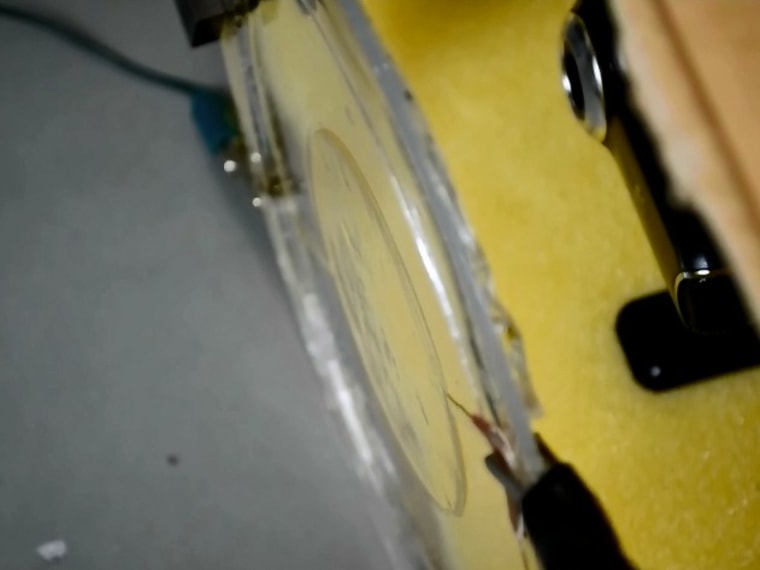A research team at Harvard has created a remarkable proof of concept device: a thin, transparent speaker powered by ions instead of electricity. Such "ionic devices" could lead to artificial muscles, telescopic contact lenses, and more.
In the electronics we use every day, a constant flow of charged electrons that we call electricity provides power for circuits, LCDs and motors. Ionic devices are powered not by electrons, but as you might guess, ions. These tiny charged particles have several advantages over electrons.
Electrons flow quickly and easily (so much so that, we think of them like a fluid on tap), but basic physical limitations mean you're unlikely to have a transparent cable or flexible circuit board.
Ionic conductors, on the other hand, stretch and compress without a problem, and with the ions suspended in a water-based "hydrogel," the resulting devices can be as clear as glass.
The problem, as scientists have known for years, is that ionic particles are slow and heavy compared with the nimble electron, and high voltages can cause reactions and enough heat to burn away the whole setup. The Harvard team, led by professor Zhigang Suo, managed to avoid these issues altogether.

How? The gist is that the new method doesn't need to move the ions around so much — instead, the particles sort of slosh around inside an insulated area. This lets the charge be redistributed in a tiny fraction of a second, enabling the creation things like speakers, which must vibrate at rates of thousands of times per second.
But speakers are just an opening act for ionics — there are other advantages, too. Unlike metallic electronics, ionic conductors can be "biocompatible," meaning they can exist in the body without being rejected or digested, the researchers said.
A thicker, stronger ionic device could replace a damaged muscle. A thinner, smaller one could be a contact lens that adjusts for distance or eye trouble. Another could be wrapped around a heart, ready to make up for weak or missed beats.
Before that, though, you might see it around the house. The optimism of the team's Christoph Keplinger when speaking to the Harvard Gazette was palpable:
Our system doesn't need a lot of power, and you can integrate it anywhere you would need a soft, transparent layer that deforms in response to electrical stimuli — for example, on the screen of a TV, laptop, or smartphone to generate sound or provide localized haptic feedback — and people are even thinking about smart windows. You could potentially place this speaker on a window and achieve active noise cancellation, with complete silence inside.
Those inventions are still years off, but the research really is a breakthrough for an entirely new class of devices that may some day power our speaker-windows and medical devices as if by magic. More information can be found in the paper itself, published this week in the journal Science; videos of the device in action can be downloaded from the "supplementary materials" section.
Devin Coldewey is a contributing writer for NBC News Digital. His personal website is coldewey.cc.
